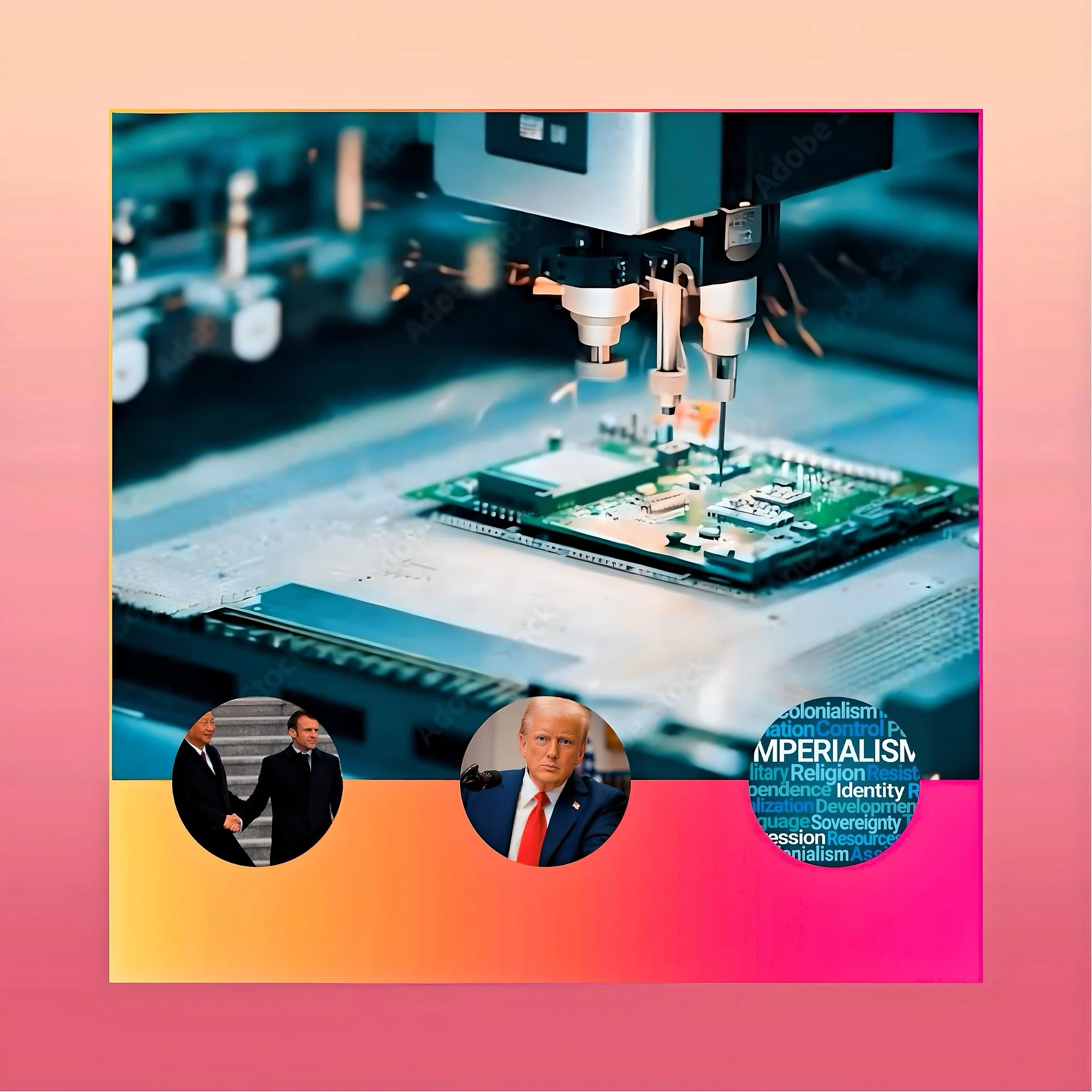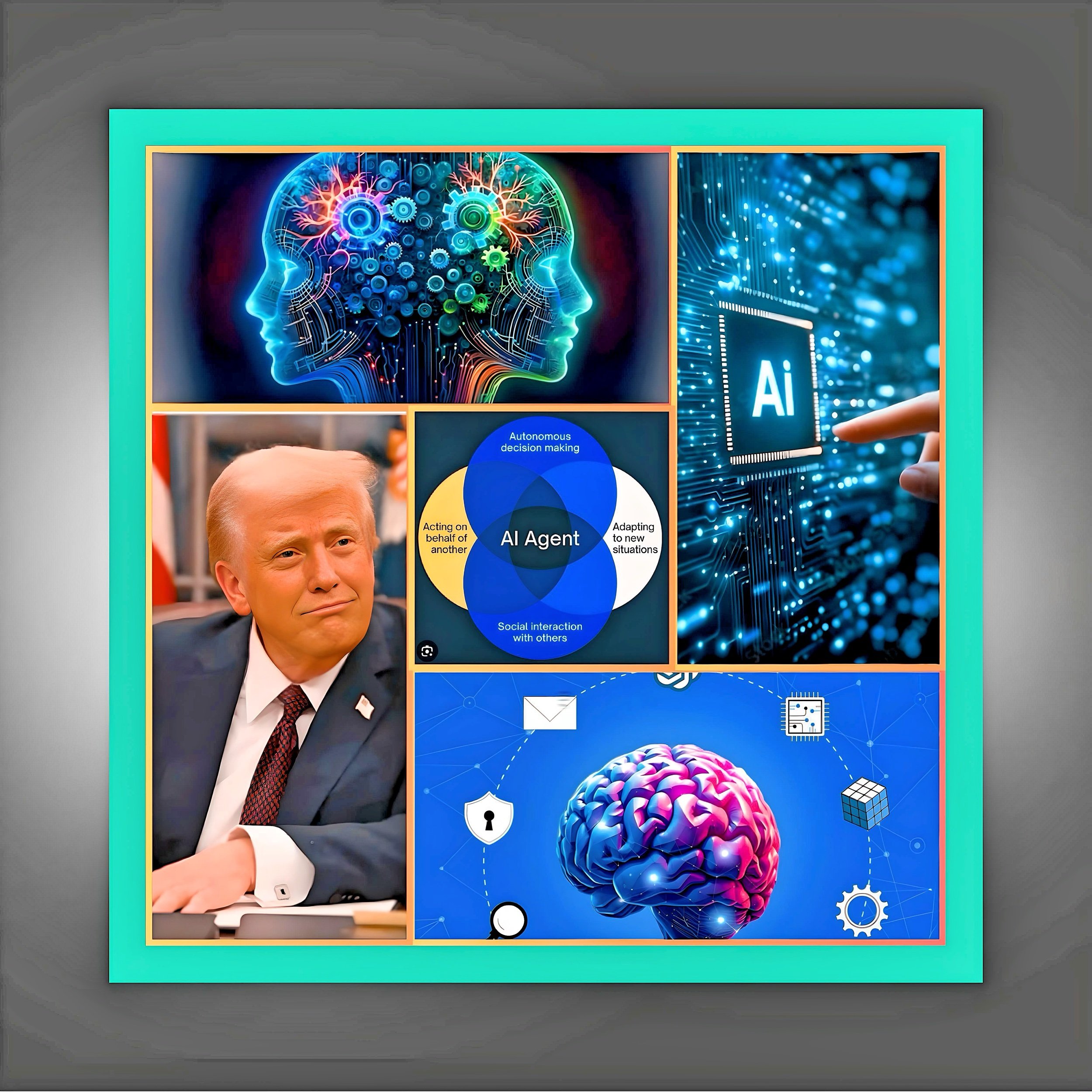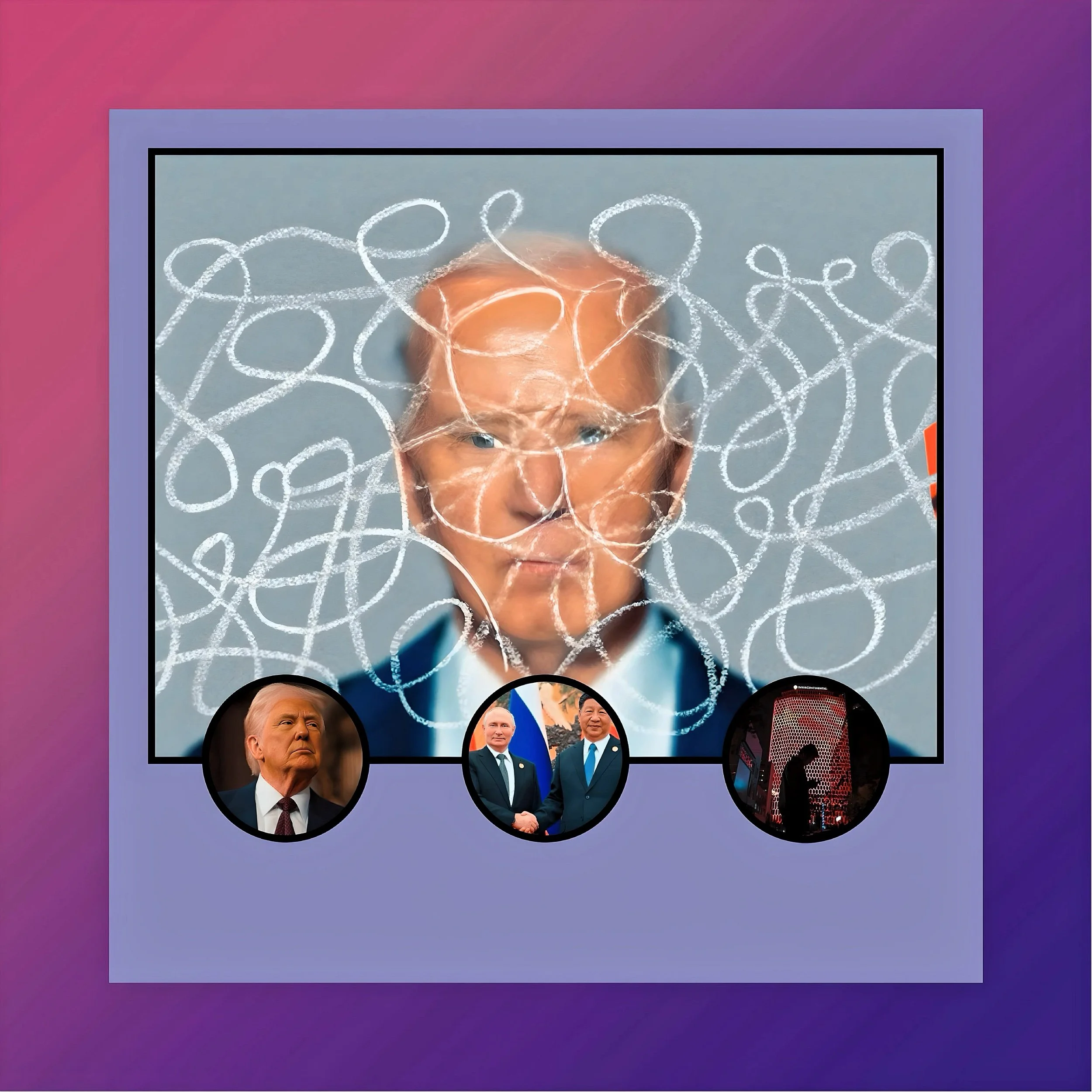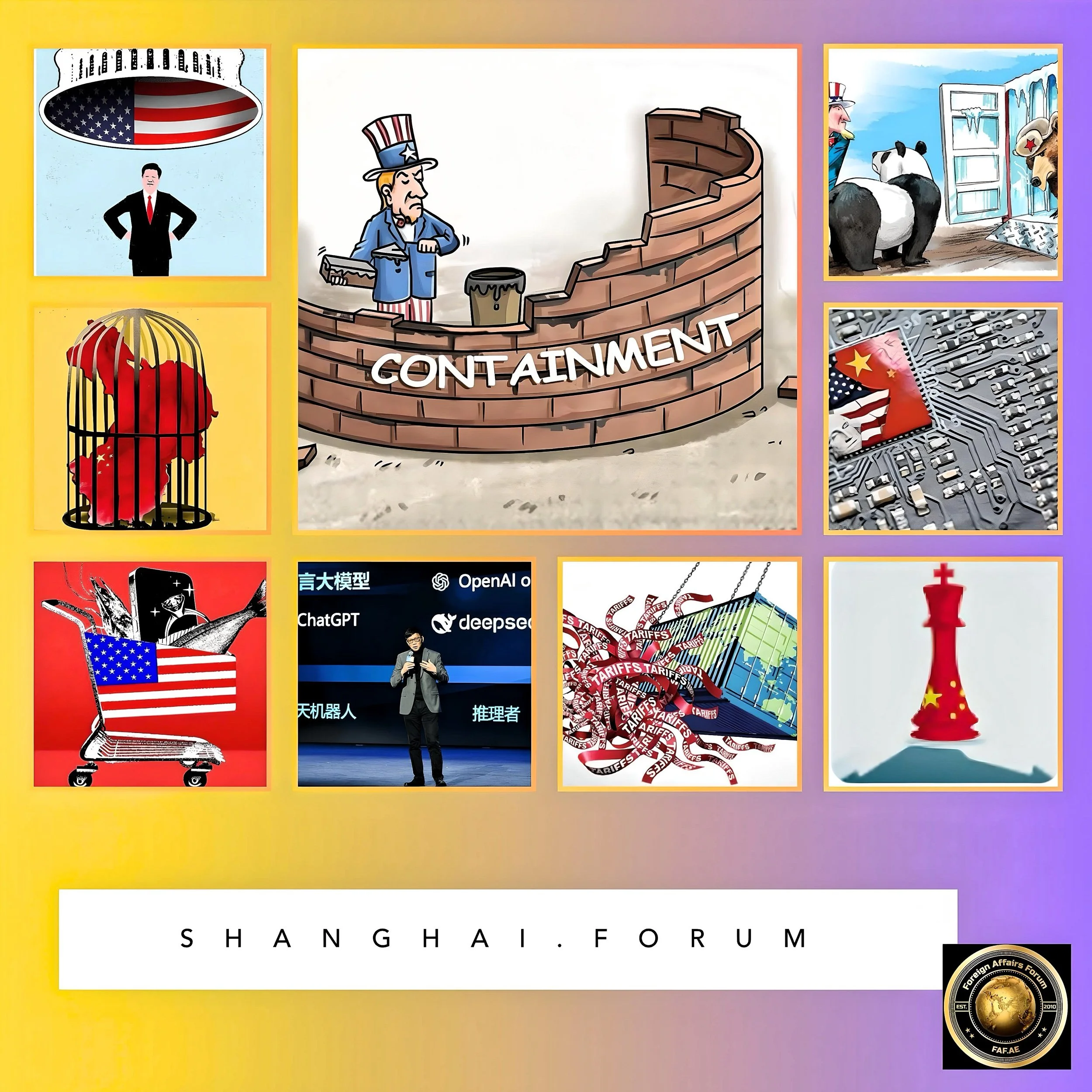Containment Can’t Win the U.S.-China Tech Race Alone: The Imperative for American Innovation
Introduction
The technological rivalry between the United States and China has emerged as the defining geopolitical competition of the 21st century, with profound implications for economic leadership, military supremacy, and the global balance of power.
While containment strategies—such as export controls, sanctions, and supply chain restrictions—have dominated U.S. policy responses, these measures alone are insufficient to secure long-term technological leadership. China’s rapid advancements in artificial intelligence (AI), semiconductors, quantum computing, and advanced manufacturing underscore the limitations of a purely defensive posture.
Over the past decade, China has narrowed the innovation gap through state-led investment in research and development (R&D), systemic reforms modeled after Western institutions, and aggressive talent recruitment programs. Meanwhile, U.S. federal funding for basic research has stagnated, private-sector R&D prioritizes short-term profits, and bureaucratic inefficiencies hinder technology commercialization.
To outcompete Beijing, Washington must pivot toward a strategy that couples targeted containment with sustained investments in foundational innovation, talent cultivation, and cross-sector collaboration.
Historical Evolution of U.S. Containment Strategies
The Emergence of Technological Decoupling
The U.S.-China tech rivalry intensified during the Trump administration, which framed technological dominance as a zero-sum contest. In 2018, the U.S. imposed tariffs on $370 billion of Chinese goods and blocked key firms like Huawei and Semiconductor Manufacturing International Corporation (SMIC) over national security concerns. These measures aimed to decouple China’s access to advanced semiconductors, AI chips, and 5G infrastructure. The Biden administration expanded these efforts through the October 2022 semiconductor export controls and the 2023 ban on Nvidia’s A100 and H100 GPUs, which are critical for AI training.
Containment policies initially slowed China’s progress by disrupting supply chains and delaying milestones in chip fabrication. However, China responded by accelerating indigenous innovation, investing $496 billion in R&D in 2024—an 8.3% annual increase—while maintaining an R&D intensity of 2.68% of GDP. By contrast, U.S. federal R&D funding has stagnated at 0.8% of GDP since 2010, with private industry now accounting for 73% of national R&D expenditures. This shift toward commercially driven research has left foundational technologies underfunded, undermining America’s ability to pioneer breakthroughs.
The CHIPS Act and Subsidies: Emulating China’s Playbook
Recognizing the inadequacy of pure containment, the U.S. introduced the CHIPS and Science Act in 2022, allocating $52 billion to revitalize domestic semiconductor manufacturing. The legislation marked a departure from free-market orthodoxy, adopting China’s model of state-led industrial policy. While the act has spurred investments in fabrication plants (fabs) in Arizona and Ohio, it fails to address systemic weaknesses in basic research. China, meanwhile, has increased its R&D spending tenfold since 2000, funding universities, tech parks, and initiatives like the Thousand Talents Plan to repatriate top scientists.
The Limitations of Containment in the Tech Race
Evasion and Adaptation in Global Supply Chains
Export controls have proven porous due to the globalization of tech supply chains. Chinese firms circumvent restrictions by sourcing chips through third-party intermediaries in Southeast Asia and repurposing consumer-grade GPUs for AI training. For instance, DeepSeek, China’s leading AI lab, achieved parity with Western models like GPT-4 using older Nvidia A800 chips, demonstrating that hardware restrictions merely delay—not prevent—Chinese advancements. Similarly, despite U.S. sanctions, Huawei’s 2023 breakthrough in 7nm semiconductor fabrication highlights the resilience of China’s innovation ecosystem.
The Innovation Paradox: Spurring Chinese Self-Reliance
Containment has inadvertently accelerated China’s push for self-sufficiency. Beijing now allocates 25% of its R&D budget to “frontier technologies” such as AI, quantum computing, and advanced materials. The STAR Market, China’s answer to NASDAQ, has raised $120 billion for tech startups since 2019, fostering homegrown giants like CATL in batteries and DeepSeek in AI. Meanwhile, U.S. restrictions on academic collaboration have isolated Chinese researchers from global conferences, pushing them to establish parallel standards in 6G and quantum communications.
China’s Innovation Ecosystem: A Blueprint for Ascent
State-led Investment and Institutional Reforms
China’s innovation strategy combines centralized planning with institutional mimicry. The National Natural Science Foundation (NSFC), modeled after the U.S. National Science Foundation, now funds over 40,000 annual projects in AI and biotechnology. Reforms like the 2014 adoption of “indirect costs” in grant management—copied from the NIH—have improved research efficiency, while initiatives like the “New Generation AI Development Plan” prioritize moonshot projects. By 2025, China aims to derive 60% of its economic growth from productivity gains driven by AI and automation.
Talent Mobilization and Global Recruitment
China’s STEM workforce has tripled since 2000, reaching 2.2 million researchers in 2024—surpassing the U.S. total of 1.6 million. The Thousand Talents Plan has lured back 8,000 overseas Chinese scientists since 2008, including pioneers in quantum computing like Pan Jianwei. Universities like Tsinghua and Peking now rank among the top 10 globally for AI research output, producing 48% more high-impact papers than U.S. institutions in 2024.
Challenges to U.S. Innovation Leadership
Declining Federal Support for Basic Research
Federal R&D funding as a percentage of GDP has fallen from 1.2% in the 1960s to 0.7% in 2024, jeopardizing America’s ability to lead in emerging fields. The private sector’s focus on applied research has left gaps in foundational areas like materials science and cryptography. For example, U.S. investment in quantum computing ($800 million annually) trails China’s $1.5 billion, enabling breakthroughs like the 2024 Jiuzhang 3.0 quantum computer.
Talent Retention and Visa Barriers
Restrictive immigration policies have reversed the post-Cold War “brain gain.” In 2024, 42% of Chinese STEM PhD graduates in the U.S. returned home, up from 12% in 2015, lured by state-funded labs and competitive salaries. The U.S. share of global AI talent has dropped to 28%, while China’s rose to 23%. Without reforms to H-1B visas and green card quotas, the U.S. risks ceding its talent advantage permanently.
Case Studies: Semiconductors and AI
Semiconductors: The High-Stakes Fabrication Race
The U.S. controls 48% of the semiconductor design market but relies on Taiwan and South Korea for 92% of advanced chip production. While the CHIPS Act has spurred $200 billion in private investments, delays in permitting and a shortage of skilled technicians threaten to derail fab construction timelines. China, meanwhile, has achieved 70% self-sufficiency in legacy chips (28nm and above) and plans to mass-produce 5nm nodes by 2026 using SMIC’s hybrid DUV-EUV lithography.
AI: The DeepSeek Phenomenon and the Limits of Chip Controls
DeepSeek’s rise illustrates the paradox of containment. Despite lacking access to Nvidia’s H100 GPUs, the company’s R1 model matched GPT-4’s performance by optimizing algorithms and leveraging China’s vast data reservoirs. Open-source frameworks like Huawei’s MindSpore and state-subsidized cloud computing have reduced dependency on Western tools. Chinese AI firms now control 40% of the global patent filings in machine learning.
Strategic Recommendations for Sustaining U.S. Leadership
Doubling Federal R&D Investment
Congress should increase federal R&D spending to 1.5% of GDP by 2030, prioritizing quantum computing, AI safety, and advanced manufacturing. Tax incentives must be reformed to match China’s 200% super-deduction for corporate R&D, which currently allows firms to deduct $200 for every $100 spent.
Revitalizing Academic-Industrial Partnerships
The NSF should establish regional innovation hubs modeled on Taiwan’s Hsinchu Science Park, linking universities like MIT and Stanford with semiconductor fabs and AI startups. Legislation to streamline tech transfer from federal labs—reducing bureaucratic delays from 18 months to 90 days—could unlock $30 billion in dormant patents.
Talent-Centric Policies
Expanding the NSF GRFP fellowship program to support 50,000 STEM Ph. D.s annually—up from 2,000 today—would address the researcher shortage. A “Green Card Fast Track” for AI and quantum Ph. Ds, coupled with a 50% tax credit for startups hiring foreign-born scientists, could reverse the talent exodus.
Conclusion
The U.S.-China tech race is not a sprint but a marathon, requiring sustained investment in the building blocks of innovation. While containment has bought time, it cannot compensate for declining federal R&D, talent attrition, and fragmented industrial policy.
By learning from China’s playbook—embracing state-led funding for basic research, fostering public-private collaborations, and welcoming global talent—the U.S. can reclaim its position as the world’s innovation leader.
The alternative—a future shaped by Chinese technological standards—poses unacceptable risks to economic security and democratic values. Victory will belong not to the nation that walls off adversaries but to the one that unlocks the full potential of its innovators.






